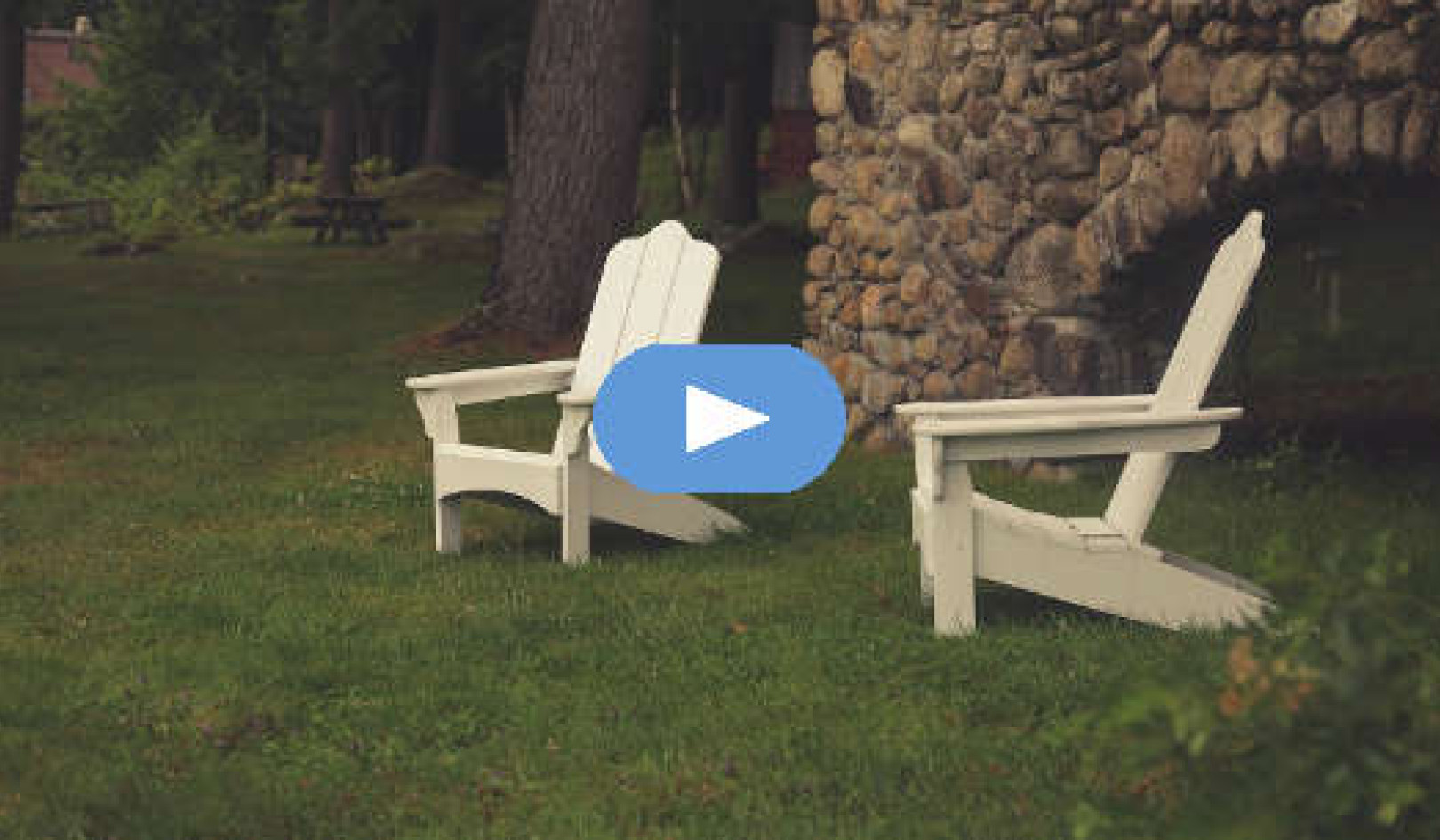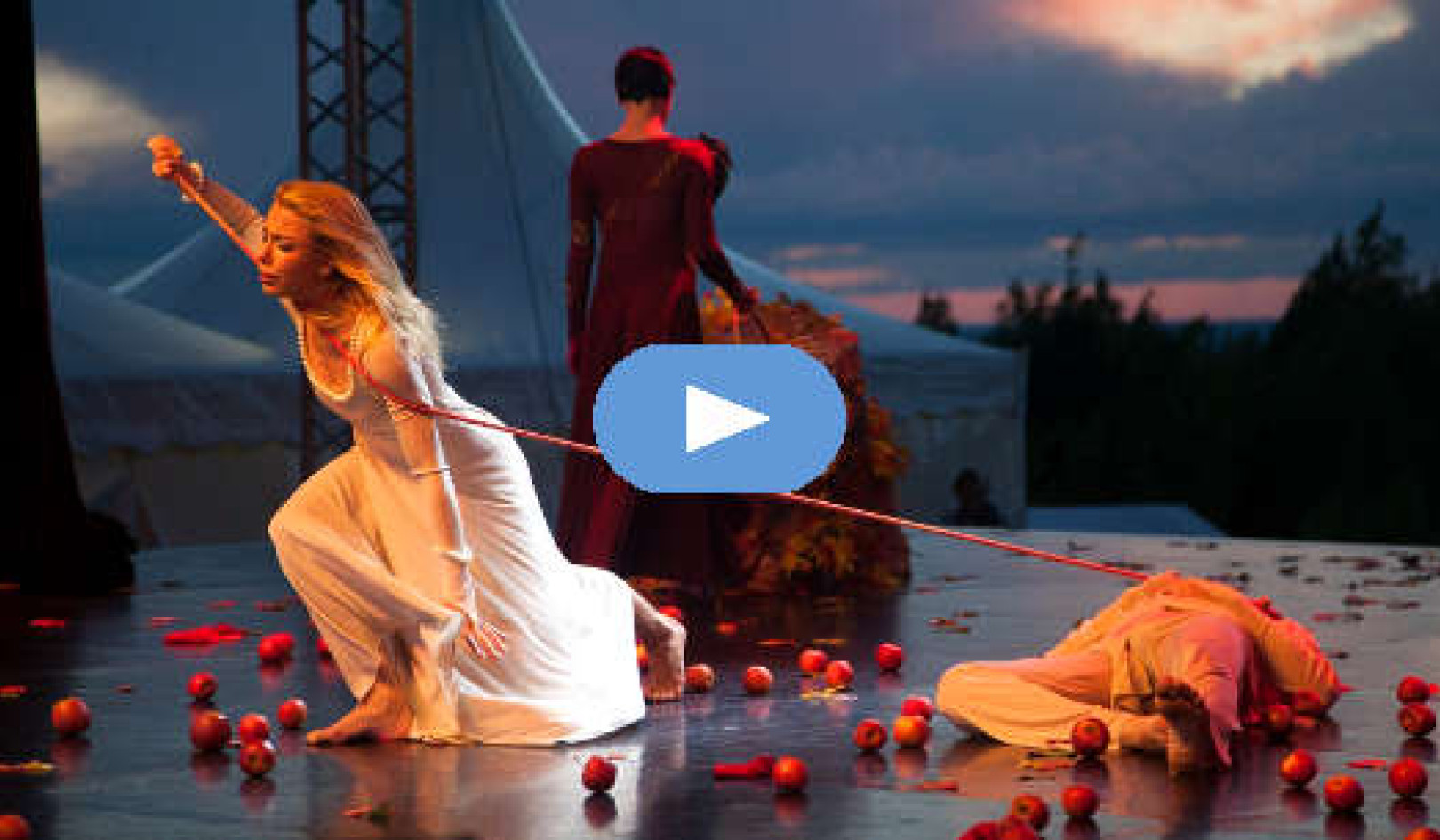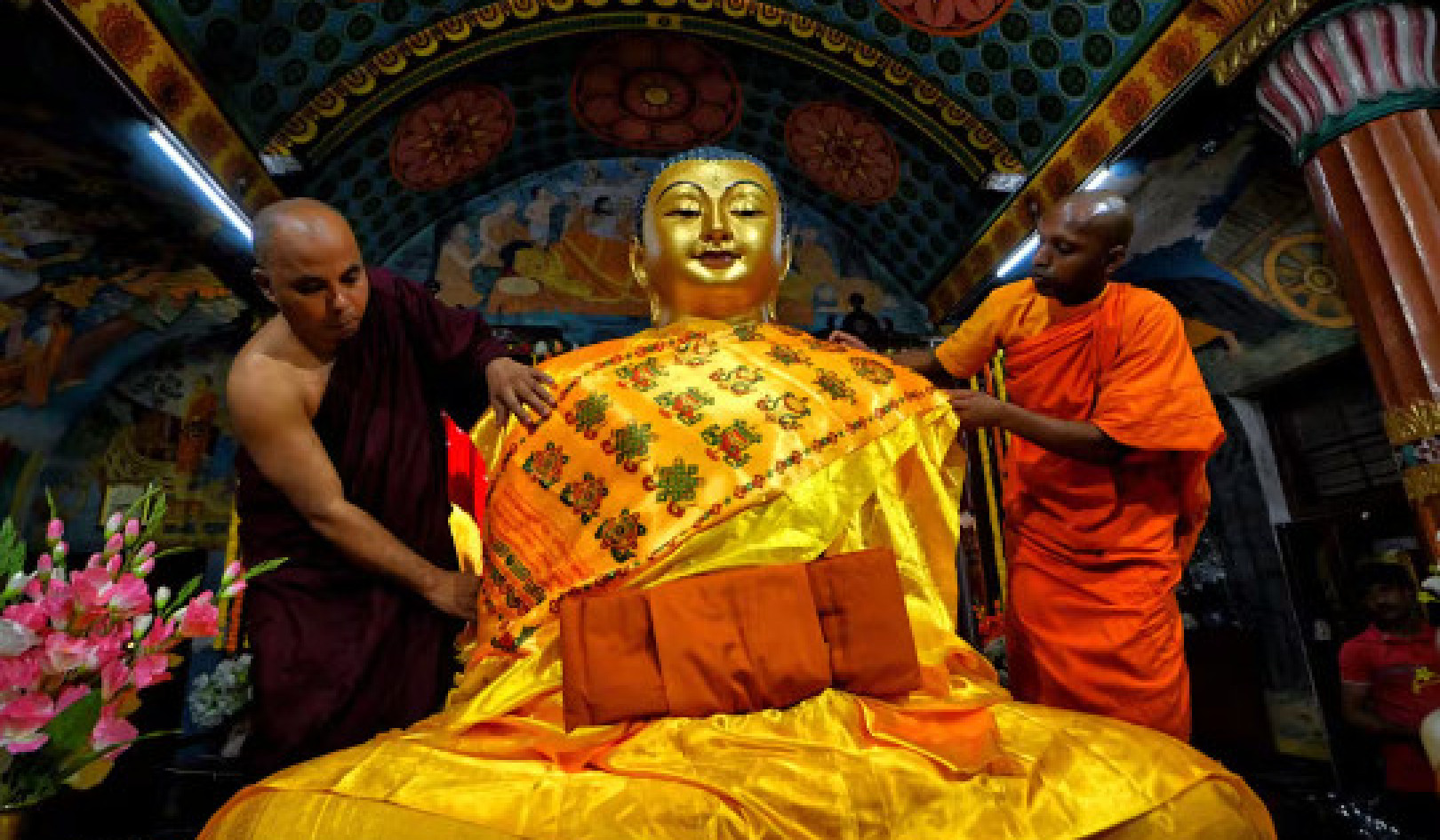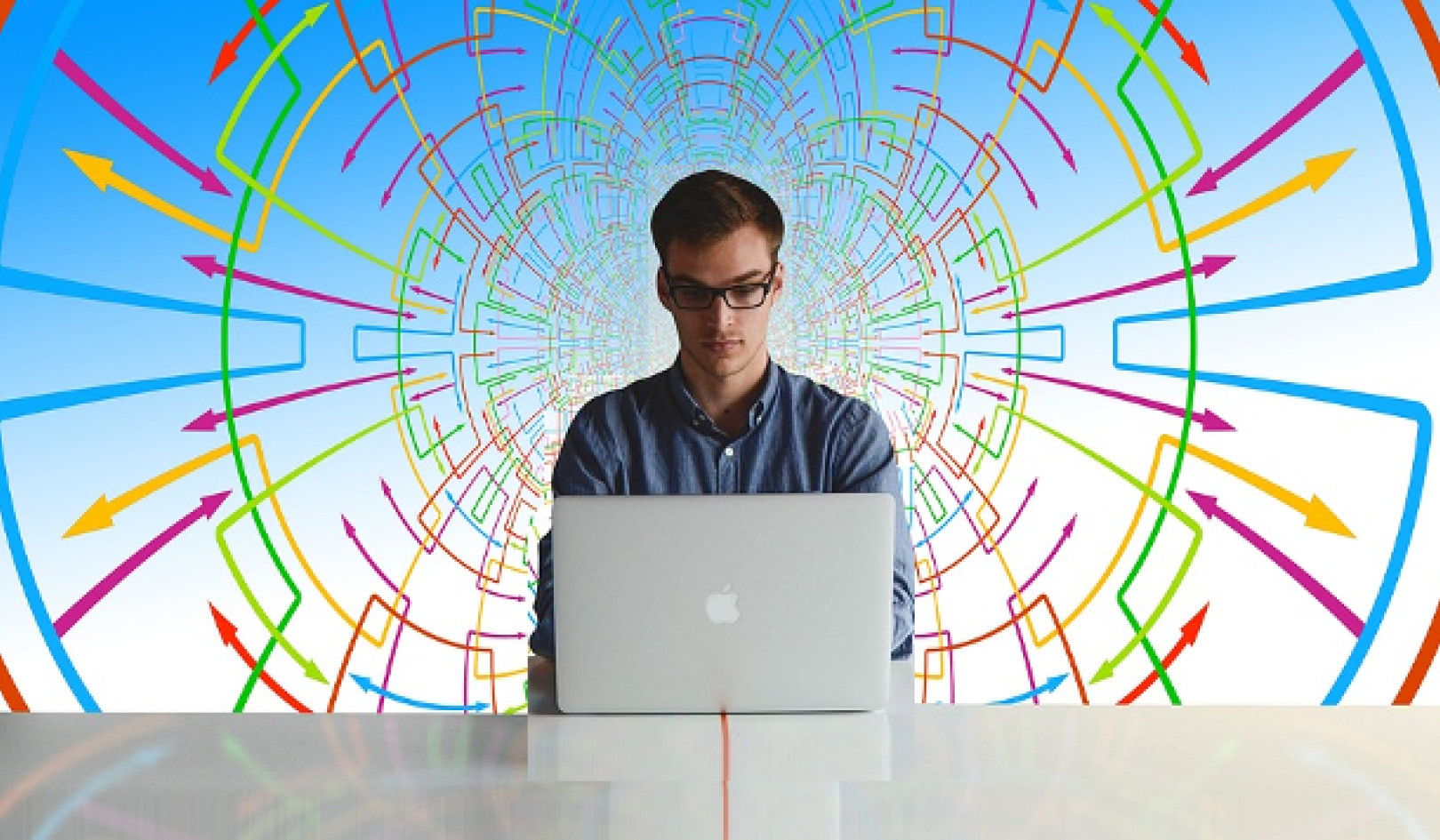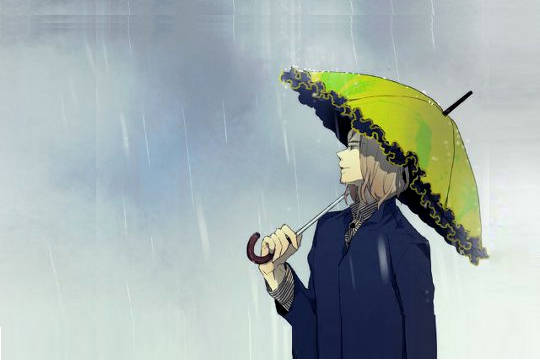
We can meet our match with a poodle
or with a raging guard dog,
but the interesting question is — what happens next?
Generally speaking, we regard discomfort in any form as bad news. But for practitioners or spiritual warriors — people who have a certain hunger to know what is true — feelings like disappointment, embarrassment, irritation, resentment, anger, jealousy, and fear, instead of being bad news, are actually very clear moments that teach us where it is that we're holding back. They teach us to perk up and lean in, when we feel we'd rather collapse and back away. They're like messengers that show us, with terrifying clarity, exactly where we're stuck.
This very moment is the perfect teacher, and, lucky for us, it's with us wherever we are. Those events and people in our lives who trigger our unresolved issues could be regarded as good news. We don't have to go hunting for anything. We don't need to try to create situations in which we reach our limit. They occur all by themselves, with clockwork regularity.
Each Day Brings Many Opportunities
Each day, we're given many opportunities to open up or shut down. The most precious opportunity presents itself when we come to the place where we think we can't handle whatever is happening. It's too much. It's gone too far. We feel bad about ourselves. There's no way we can manipulate the situation to make ourselves come out looking good. No matter how hard we try, it just won't work. Basically, life has just nailed us.
It's as if you just looked at yourself in the mirror, and you saw a gorilla. The mirror's there; it's showing "you", and what you see looks bad. You try to angle the mirror so you will look a little better, but no matter what you do, you still look like a gorilla. That's being nailed by life, the place where you have no choice except to embrace what's happening or push it away.
Most of us do not take these situations as teachings. We automatically hate them. We run like crazy. We use all kinds of ways to escape — all addictions stem from this moment when we meet our edge and we just can't stand it. We feel we have to soften it, pad it with something, and we become addicted to whatever it is that seems to ease the pain. In fact, the rampant materialism that we see in the world stems from this moment.
There are so many ways that have been dreamt up to entertain us away from the moment, soften its hard edge, deaden it, so we don't have to feel the full impact of the pain that arises when we cannot manipulate the situation to make us come out looking fine.
Seeing Clearly What's Going On
Meditation is an invitation to notice when we reach our limit, and to not get carried away by hope and fear. Through meditation, we're able to see clearly what's going on with our thoughts and emotions, and we can also let them go. What's encouraging about meditation is that even if we shut down, we can no longer shut down in ignorance. We see very clearly that we're closing off. That in itself begins to illuminate the darkness of ignorance. We're able to see how we run and hide, and keep ourselves busy, so that we never have to let our hearts be penetrated. And we're also able to see how we could open and relax.
Basically, disappointment, embarrassment, and all these places where we just cannot feel good, are a sort of death. We've just lost our ground completely; we are unable to hold it together and feel that we're on top of things. Rather than realizing that it takes death for there to be birth, we just fight against the fear of death.
Reaching Our Limit
Reaching our limit is not some kind of punishment. It's actually a sign of health that, when we meet the place where we are about to die, we feel fear and trembling. A further sign of health is that we don't become undone by fear and trembling, but we take it as a message that it's time to stop struggling and look directly at what's threatening us. Things like disappointment and anxiety are messengers telling us that we're about to go into unknown territory.
Our bedroom closet can be unknown territory for some of us. For others, it's going into outer space. What evokes hope and fear for me is different from what brings it up for you. My aunt reaches her limit when I move a lamp in her living room. My friend completely loses it when she has to move to a new apartment. My neighbor is afraid of heights. It doesn't really matter what causes us to reach our limit. The point is that sooner or later it happens to all of us.
The first time I met Trungpa Rinpoche was with a class of fourth graders who asked him a lot of questions about growing up in Tibet and about escaping from the Chinese Communists into India. One boy asked him if he was ever afraid. Rinpoche answered that his teacher had encouraged him to go to places like graveyards that scared him and to experiment with approaching things he didn't like.
Then he told a story about traveling with his attendants to a monastery he'd never seen before. As they neared the gates, he saw a large guard dog with huge teeth and red eyes. It was growling ferociously and struggling to get free from the chain that held it. The dog seemed desperate to attack them. As Rinpoche got closer, he could see its bluish tongue and spittle spraying from its mouth. They walked past the dog, keeping their distance, and entered the gate. Suddenly the chain broke and the dog rushed at them. The attendants screamed and froze in terror. Rinpoche turned and ran as fast as he could — straight at the dog. The dog was so surprised that he put his tail between his legs and ran away.
We can meet our match with a poodle or with a raging guard dog, but the interesting question is — what happens next?
Going Beyond Hope & Fear
The spiritual journey involves going beyond hope and fear, stepping into unknown territory, continually moving forward. The most important aspect of being on the spiritual path may be to just keep moving. Usually, when we reach our limit, we feel exactly like Rinpoche's attendants and freeze in terror. Our bodies freeze and so do our minds.
How do we work with our minds when we meet our match? Rather than indulge or reject our experience, we can somehow let the energy of the emotion, the quality of what we're feeling, pierce us to the heart. This is easier said than done, but it's a noble way to live. It's definitely the path of compassion — the path of cultivating human bravery and kindheartedness.
Finding Unconditional Goodness
In the teachings of Buddhism, we hear about egolessness. It sounds difficult to grasp: what are they talking about, anyway? When the teachings are about neurosis, however, we feel right at home. That's something we really understand. But egolessness?
When we reach our limit, if we aspire to know that place fully — which is to say that we aspire to neither indulge nor repress — a hardness in us will dissolve. We will be softened by the sheer force of whatever energy arises — the energy of anger, the energy of disappointment, the energy of fear. When it's not solidified in one direction or another, that very energy pierces us to the heart, and it opens us.
This is the discovery of egolessness. It's when all our usual schemes fall apart. Reaching our limit is like finding a doorway to sanity and the unconditional goodness of humanity, rather than meeting an obstacle or a punishment.
The safest and most nurturing place to begin working this way is during formal meditation. On the cushion, we begin to get the hang of not indulging or repressing, and of what it feels like to let the energy just be there. That is why it's so good to meditate every single day and continue to make friends with our hopes and fears again and again. This sows the seeds that enable us to be more awake in the midst of everyday chaos. It's a gradual awakening, and it's cumulative, but that's actually what happens. We don't sit in meditation to become good meditators. We sit in meditation so that we'll be more awake in our lives.
The first thing that happens in meditation is that we start to see what's happening. Even though we still run away, and we still indulge, we see what we're doing clearly. One would think that our seeing it clearly would immediately make it just disappear, but it doesn't. So for quite a long time, we just see it clearly. To the degree that we're willing to see our indulging and our repressing clearly, they begin to wear themselves out. Wearing out is not exactly the same as going away. Instead, a wider, more generous, more enlightened perspective arises.
Acknowledging Thoughts Without Judgment
How we stay in the middle, between indulging and repressing, is by acknowledging whatever arises without judgment, letting the thoughts simply dissolve, and then going back to the openness of this very moment. That's what we're actually doing in meditation. Up come all these thoughts, but rather than squelch them or obsess with them, we acknowledge them and let them go. Then we come back to just being here. As Sogyal Rinpoche puts it, we simply "bring our mind back home".
After a while, that's how we relate with hope and fear in our daily lives. Out of nowhere, we stop struggling and relax. We stop talking to ourselves and come back to the freshness of the present moment.
This is something that evolves gradually, patiently, over time. How long does this process take? I would say it takes the rest of our lives. Basically, we're continually opening further, learning more, connecting further with the depths of human suffering and human wisdom, coming to know both those elements thoroughly and completely, and becoming more loving and compassionate people. And the teachings continue. There's always more to learn. We're not just complacent old fogies who've given up and aren't challenged by anything anymore. At the most surprising times, we still meet those ferocious dogs.
We might think, as we become more open, that it's going to take bigger catastrophes for us to reach our limit. The interesting thing is that, as we open more and more, it's the big ones that immediately wake us up and the little things that catch us off guard. However, no matter what the size, color, or shape is, the point is still to lean toward the discomfort of life and see it clearly rather than to protect ourselves from it.
Just Being with Our Experience
In practicing meditation, we're not trying to live up to some kind of ideal — quite the opposite. We're just being with our experience, whatever it is. If our experience is that sometimes we have some kind of perspective, and sometimes we have none, then that's our experience. If sometimes we can approach what scares us, and sometimes we absolutely can't, then that's our experience.
"This very moment is the perfect teacher, and it's always with us" is really a most profound instruction. Just seeing what's going on — that's the teaching right there. We can be with what's happening and not dissociate. Awakeness is found in our pleasure and our pain, our confusion and our wisdom, available in each moment of our weird, unfathomable, ordinary everyday lives.
©2000, 2002. Reprinted by arrangement with
Shambhala Publications, Inc. www.shambhala.com.
Article Source:
When Things Fall Apart: Heart Advice for Difficult Times
by Pema Chödrön. The beautiful practicality of her teaching has made Pema Chödrön one of the most beloved of contemporary American spiritual authors among Buddhists and non-Buddhists alike. A collection of talks she gave between 1987 and 1994, the book is a treasury of wisdom for going on living when we are overcome by pain and difficulties.
The beautiful practicality of her teaching has made Pema Chödrön one of the most beloved of contemporary American spiritual authors among Buddhists and non-Buddhists alike. A collection of talks she gave between 1987 and 1994, the book is a treasury of wisdom for going on living when we are overcome by pain and difficulties.
Click here for more info and/or to order this book. Also available in a Kindle edition. (different cover/newer edition)
About The Author
 Pema Chödrön is an American Buddhist nun and one of the foremost students of Chögyam Trungpa, the renowned meditation master. She is the resident teacher at Gampo Abbey, Cape Breton, Nova Scotia, the first Tibetan monastery in North America established for Westerners. She is also the author of "The Wisdom of No Escape" and "Start Where You Are".
Pema Chödrön is an American Buddhist nun and one of the foremost students of Chögyam Trungpa, the renowned meditation master. She is the resident teacher at Gampo Abbey, Cape Breton, Nova Scotia, the first Tibetan monastery in North America established for Westerners. She is also the author of "The Wisdom of No Escape" and "Start Where You Are".
Related Books
at InnerSelf Market and Amazon























